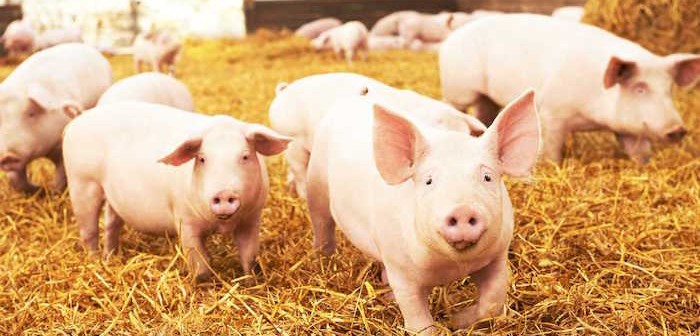The extent to which pork production has been pared back on the back of multiple crises over the past 12 months has been laid bare in worrying new data collated by Agrovision.
The new anonymised data shows significant reductions in sow numbers and services and weaners coming into the system on a weekly basis, compared with last year, providing stark evidence of the how the industry contraction will soon start to affect pig supplies going forward. It also shows how contraction in all these areas has been accelerating in recent months.
A big proportion of the data AgroVision records on pig herd performance goes into a sample, representing about 60% of the GB herd, providing an overview of industry trends. Key trends in the year to April include:
Weaned pigs
AgroVision recorded 373,000 weaners in April 2022, compared with 482,000 a year earlier, a huge 23% drop, continuing a downward trend since the start of the year.
The three-month rolling average shows a steady, virtually uninterrupted decline from a monthly average of 479,000 in September 2021 to 406,000 in April.
Based on services, AgroVision is forecasting further declines in weaner numbers in May and June.
Sow numbers
AgroVision’s April 2022 figure of 181,000 sows represents a 27,000, 13%, year-on-year reduction on the April 2021 figure 208,000.
Between April and November 2021, the figure was relatively stable level at around 206,000 to 208,000 sows. But, there have been seven consecutive months of decline since September 21, with the rate accelerating since November, including a reduction of 14,000 between February and April.
Services
The AgroVision data suggests a 21% year-on-year drop in sow services, with 33,000 recorded in April, compared with 42,000 in April 2021. There has been an even more dramatic 32% decline since a November 2021 figure of 48,000.
For a fuller picture, between April 2021 and November 2021, the three-month rolling average was steady at 44,600 to 44,900 services per month.
Then came the decline, gradual at first, but accelerating in the spring, resulting in an April figure of just 34,900.
Herd numbers
The number of herds recorded by AgroVision fell from 263 in April 2021 to 221 a year later, again following a steady decline since the autumn.
Representative
Agrovision’s James Nesling said the company was confident the figures are representative of the wider industry.
“One or two producers might have stopped recording but, generally, those that are using the system are updating regularly as they need to be recording what they are doing. This is a very good sample size and the data is fairly consistent month on month,” he said.
“It highlights what many have suspected – we have been losing sow numbers and seeing a reduction in services for some time and this is now feeding through to pigs weaned, which in turn will influence the number of pigs reaching the market over the coming months.”
With the true picture of pig supply versus demand currently partly obscured by the ongoing efforts to clear the pig backlog, the data appears to confirm that when it is cleared, we will be rapidly heading from surplus to shortage.
If these figures are truly reflective nationally, 20%+ falls in services and weaners produced could result in a drop of more than a million pigs a year going through our supply chains. This is at a time when the EU price is also relatively high and EU herds are also contracting.
Meanwhile, despite price increases that have recently seen the SPP top 180p/kg for the first time ever, producers continue to lose vast amounts on a weekly basis, as costs soar higher to average 240p/kg in May.
NPA chief executive Zoe Davies said: “The AgroVision data should send out a message to our supply chain and government about the huge impact of this ongoing crisis so far on our production capacity, on top of the financial, emotional and animal welfare strain producers have been suffering.
“At a time when food security is under the spotlight, we do not want to see our production capacity eroded to the point where we are almost entirely reliant on imports.
“That is why we continue to call for all parts of the supply chain to play their part in putting prices up and for the Government to provide some proper support, so we can stem this decline in UK pork production.”
She highlighted recent analysis showing how some retailers are currently doing more than others to help. “It is time for the whole supply to pull together to secure our future supplies of British pork,” she said.




